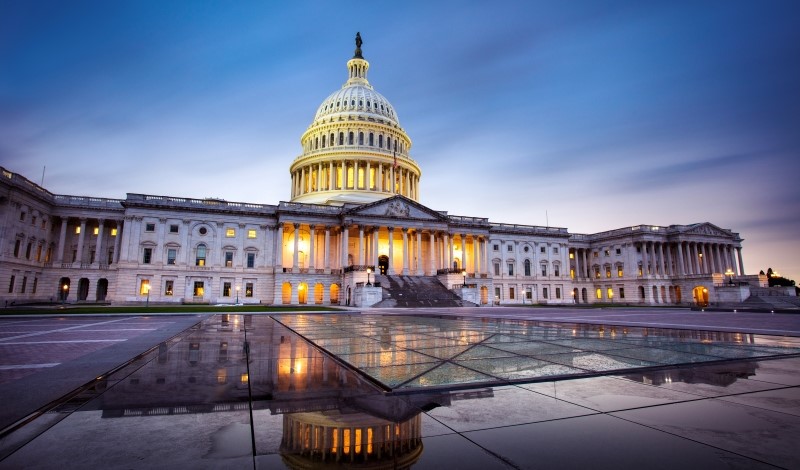
Claims about the consequences of remaking Chevron deference require empirical backing.
The Supreme Court will soon decide, in the cases of Loper Bright Enterprises v. Raimondo and Relentless, Inc. v. Department of Commerce, whether to discard Chevron deference. If it does, a staple of administrative law for the past forty years will be gone, and with it any semblance of normal order in the administrative state.
One of the more remarkable things about the cases thus far is the rather transparent interest that the Court and the advocates have shown in understanding the consequences of overturning Chevron v. Natural Resources Defense Council. There was, for example, much discussion of how overturning Chevron might tamp down the dizzying see-saw of regulatory law from administration to administration, and of how overturning the doctrine might affect long-settled agency interpretations of statutes.
There was also a surprising amount of focus on a seemingly unfamiliar policy argument: that abandoning Chevron deference could light a fire under Congress, causing it to produce more statutes rather than relying on agency maneuvering within their authority under existing statutes.
This claim about Congress’s incentives, which appeared in several briefs and featured prominently in the Loper Bright oral argument, came completely unaccompanied by evidence. In fact, during his oral argument in favor of overturning Chevron, attorney Paul Clement scoffed at government lawyers’ mere suggestion that the claim required any serious look for evidence: “My friends asked for empirical evidence. I think you just have to look at this Court’s docket. It’s been one major rule after another. It hasn’t been one major statute after another.”
We can do better than folk wisdom and anecdotal evidence. In a recent working paper, I tested the claim that Chevron encourages legislative stagnation. The results suggest that the theory is not only wrong, but backward. If what we want is legislative productivity, the evidence suggests we are better off with some form of deference than we are with judges exercising independent, or de novo, review of statutory questions.
For the most part, the Court’s apparent embrace of pragmatism in asking about the effects of their decisions might well be a salutary thing. There would not likely be so much interest in these cases if the decisions were unlikely to significantly change how the administrative system operates, and it is entirely appropriate for observers to focus on what that change might look like. Even if the normative implications of these changes are ambiguous—some might see agency see-sawing as in tension with the rule of law or good administrative government, while others might see it as a channel for democratic accountability—it is good to know what we should expect when we change administrative law. Compared to a more indiscriminate “burn-it-all-down” formalism, the Court’s apparent interest in real-world consequences seems laudable.
There is, however, much responsibility that comes with the Court’s embrace of administrative pragmatism in these cases. Right now, neither administrative lawyers nor the justices have a sufficiently rigorous approach to verifying the bounty of empirical claims that a pragmatic orientation opens up. As Nick Bednar has noted, we administrative law experts have rarely asked ourselves “how we know what we know” when we assert the likely consequences of an action. The problem is particularly daunting in light of how interdependent so many aspects of the administrative law system are. Chevron is only one part of the incentive structure for administrative decisionmakers, and other, seemingly unrelated doctrinal spaces, such as cases on the presidential removal power, also likely shape administrative action. Tracing systematic effects is not traditionally a strength of courts, and indeed it resembles the kind of “polycentric” problem of courts’ nightmares. As legal scholar Lon L. Fuller described, the problem arises because a “pull on one strand” of the spider web “will distribute tensions after a complicated pattern throughout the web as a whole.”
A particularly complicated version of this problem can be seen in the way that the advocates in Loper Bright and Relentless have deployed their argument about Chevron’s incentives for Congress. A number of briefs raised the argument that deference is responsible for congressional stagnation, and that overturning Chevron would be a way to stoke greater legislative productivity. An amicus brief from the Pacific Legal Foundation stated that Chevron has prompted “a permanent emigration of legislative power from the hands of democratically accountable people’s representatives in Congress to unaccountable administrative agencies.” In oral argument, attorney Paul Clement echoed these arguments, stating that the Chevron Court in 1984 overlooked Congress’s reliance on broad statuory terms. The implication of the argument is that Congress would have every incentive to pass new authorizing legislation if only the Court would take away the easy path.
If this argument about Congress’s incentives under the Chevron regime seems familiar, that is because it is. Administrative lawyers commonly argue that the law currently creates perverse incentives for Congress to take shortcut actions that degrade democratic accountability. As Judge Steven Menashi and Daniel Z. Epstein have written, a common thread in the “critique of deferential administrative law doctrines is the belief that administrative policymaking has displaced legislation—that the agencies are making policy decisions that should be made by elected representatives in Congress.” They continue by noting that “a prominent thought has been that if the courts were less indulgent of agency policymaking, it would force Congress to legislate more frequently, more specifically, and on a wider range of subjects.”
In Loper Bright and Relentless, the target of this empirical claim was Chevron deference, but commentators have also raised similar arguments about the nondelegation doctrine and even about agencies’ own “self-delegations.” Each of these instances has presented the Court with an apparent solution —by merely tweaking an allegedly problematic doctrine that creates perverse incentives, the Court can dramatically change government for the better. So common is this incentives-based argumentation that it deserves a name—call it “the formula.”
If only it were true. In reality, arguments from “the formula” simplify the complicated institutional incentives confronting Congress and other parts of government. To take just one small example, consider how the critique of Chevron’s incentives for legislators assumes a two-institution game: Congress must simply decide how much authority to give agencies, and the degree of discretion that agencies are allowed to have determines how much authority is needed. Yet, among other things, this setup ignores the reality that, if agencies are not interpreting statutes, the courts will likely have to pick up the slack. Just as much as agencies’ interpretive discretion under Chevron might theoretically take away some incentive to legislate, so too might courts’ interpretive discretion. In fact, Congress might be even more deterred from legislating if courts retained primacy in statutory interpretation. This likely depends on an innumerable number of unmeasured factors, including whether Congress is likely to prefer delegation to agencies—whose decisions they might be able to control—over delegation to courts—whose decisions may be less susceptible to oversight. The net result of forcing more decisions into the hands of judges might therefore be less new legislation. These kinds of complications counsel humility by judges when evaluating claims like those raised by advocates seeking to overturn Chevron.
These complications also counsel in favor of a more demanding approach across the board to what are, at root, empirical questions. New text-as-data methods make many empirical claims about law more testable than they have ever been, and it is imperative that scholars and practitioners bring these approaches to bear on the incentives-based arguments that sometimes drive major changes in the law. As Cass Sunstein and Adrian Vermeule have argued, empirical testing can often help avoid engaging in the “sign fallacy.” This means that even when a particular doctrine might have a plausible incentive effect, measurement is essential to ensure that the signal rises above the noise.
Empirical testing reveals that the argument offered by advocates in Loper Bright and Relentless—namely, that Chevron dampens legislative productivity—is drastically off the mark. In a recent working paper, I tested the theory using state-level data, as deference doctrines vary across states and are more variable over time there than they are at the federal level. I classified a massive number of state deference doctrines into doctrinal categories matching federal categories, such as Chevron deference, Skidmore deference, and de novo review, resulting in a unique dataset tracking state deference doctrines that could be linked to existing data from the states on state legislative productivity.
I found that there was no statistically significant evidence that Chevron or Skidmore deference was negatively associated with legislative productivity.
De novo review, however, did have a statistically significant negative association with legislative productivity. In short, the theory advocates floated in Loper Bright and Relentless appears to be completely backward. If the states are any guide, replacing Chevron deference with anything resembling independent judicial review could result in measurable decreases in congressional productivity. This is not what anybody—except those who benefit from legislative inertia or simply favor less overall law—wants.
The failure of the Chevron incentives argument to comport to reality is a warning sign. To the extent that the justices on the Supreme Court are sincere, they are likely not equipped to evaluate arguments from “the formula,” and they are at significant risk of being misled by their own laudable desire to get the incentives right. To the extent that they are not sincere, the justices on the Supreme Court can use a plausible, but untested, theory to cover for changes they prefer on other grounds, ideological or otherwise. Taking consequences seriously opens the door for much mischief in the absence of high-quality analysis, both theoretical and empirical.
An important, longer-term project should be to find institutional solutions for the growing trend to invoke arguments from “the formula.” Both the academy and the bar will need to play a role in augmenting the level of information that is available to make decisions about the likely incentive-effects of doctrinal changes. Perhaps some professional regulation or training of judges or advocates about empirical methods of research might help ensure that the ease of concocting new theories about behavioral incentives does not become an invitation to pollute the decision-making environment with misleading claims.
As we enter a new era in administrative law—an era that appears to be marked by a Supreme Court that is open to significant change on the basis of perceived problems in administration—it is more imperative than ever that scholars and lawyers work to provide real evidence of what those changes will bring.




